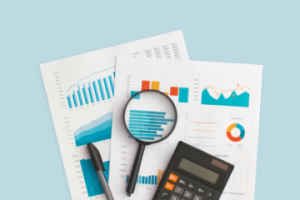One would think that in the modern digital world, cash is no longer king. But when it comes to corporate banking, cash and liquidity are still critical indicators of financial well-being. Cash forecasting still ranks amongst one of the most inefficient treasury functions across organizations. According to an American Banker survey, 49% respondents said accurate cash flow forecasting was important but only 38% fully met client needs. As market disruptions continue to impact banking, corporate treasurers must be able to move from reporting liquidity to forecasting and predicting. At the same time there is increasing scrutiny on sustainability and demand for sustainable financial offerings. Banks must move to support the treasury function with solutions ranging from efficient cash forecasting to innovations around sustainability if they want to strengthen their corporate banking engagements.
What do Corporate Banking Customers Want?
In the past, the treasury capabilities that banks offered focused on execution of corporate transactions. But unprecedented disruption in the form of the pandemic, a war in Europe, and global economic instability have led to a demand for greater visibility into enterprise liquidity. Corporate banking customers are no longer content with receiving statements of historical activity in arrears. The treasurer role is moving on to be much more strategic, so that they can advise the organization not only on their cash availability and liquidity, but also interest rate risk and seemingly unrelated things like ESG. In fact, corporate customers today want better support from banks on functions beyond payments, investments, and cash flows. As a result, banks must expand their transaction banking services to include liquidity management tools such as cash forecasting, sustainability metrics, and supply chain forecasting. Such capabilities are increasingly being embedded into global transaction banking (GTB) portals. Efficient, modernized transaction banking and treasury services generate more than USD550 billion in annual revenues. As competition from fintechs and macro-economic factors continue to disrupt the sector and put banking revenues under pressure, this is not an insignificant projection that banks can ignore.
The Need for Sustainability
There is now increased scrutiny around sustainable banking and environmental, social, and governance (ESG)reporting. The global transaction banking (GTB) segment is still in its nascent stages but has significant potential. Revenue from sustainable GTB products is expected to grow at 15-20 percent annually to a total of USD 28 billion – USD 35 billion by 2025. Market penetration is likely to reach 25 percent in trade finance products and 5 percent in cash management products. Unfortunately, most banks around the world have not started embedding sustainability features within their GTB products. Legacy processes and systems are hard to bypass, and this challenge is compounded by a fragmented ecosystem with multiple parties and lack of reliable data on the company’s sustainability activities and industry standards. But this is a challenge that can be solved relatively easily by fast tracking digital transformation with a focus on modernizing corporate banking function.
Modernizing Corporate Billing
A strategic and holistic insight into liquidity and cash forecasting as well as sustainability focus requires a robust digital technology foundation. Unfortunately, while most banking functions have undergone rapid digitization in the recent past, the function of corporate billing, also known as account analysis in the U.S. has largely been ignored. While 6 out of ten customers say that real-time account information is critically important, only 41 percent of banks are equipped to deliver. Modernization of account analysis and billing tools must now be a critical focus as this function holds significant strategic value for corporate treasurers looking to better manage cash. In addition, modernized and efficient account analysis capabilities can help banks improve customer satisfaction, enhance operational efficiency, and eliminate revenue leakage. Such a system can also address growing concerns and demands around ESG priorities.
The Final Word
Modernizing infrastructure to deliver updated GTB services with embedded sustainability features is not as expensive, risky, or time consuming as banks might think. There are robust specialized account analysis solutions in the market that can be easily deployed over their legacy infrastructure to deliver the strategic GTB functionalities in demand by most corporate customers. Such a powerful cloud-native platform will also make it easy to deploy sustainability features and better manage ESG reporting, thereby offering preferential pricing and benefits to customers who perform better on these parameters.
The banking sector is now navigating uncharted waters in a market impacted by unprecedented disruption. Corporate banking customers now expect GTB services that offer more strategic insights into liquidity and cash forecasting as well as a better focus on sustainability. And the only way banks can deliver this is by adopting technology powered strategies – either by partnering with or acquiring fintechs, or by modernizing their legacy account analysis capabilities.
To learn how SunTec can help you with your corporate banking needs, write to us at contactus@suntecgroup.com







